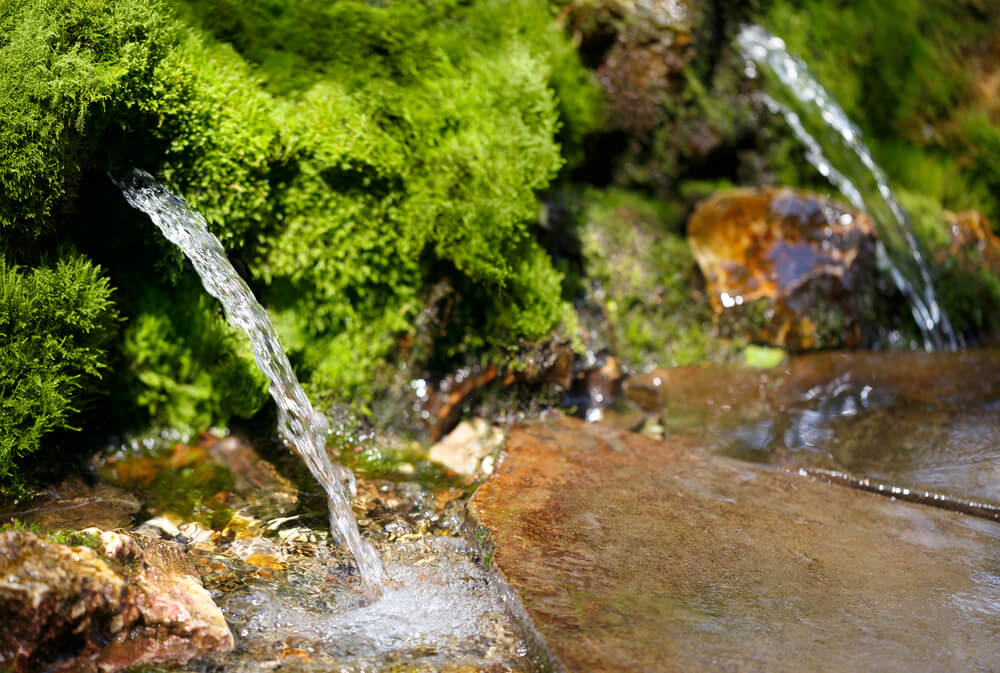6 Simple Tips for Developing a Natural Spring
Venturing into the woods with my late grandfather to fill up gallon jugs with water from a natural spring he found and tapped himself is one of my favorite childhood memories. I never thought much about it back then. Walking a quarter mile or so into the wooded hills to collect the family’s drinking water was just routine.
Years later, I moved down the road from my grandparents and experienced the rural fun of having to haul water in from town. It was then I found comfort in knowing that the old spring still rested in the hills should we ever need it.
What is a natural spring?
A natural spring is an outlet of groundwater, not a stream. A true natural spring will surface from naturally flowing groundwater. They’re also called concentrated springs because they emerge from the ground in a single place.
What’s the difference between a spring and a seep?
Natural springs are sometimes confused with seeps, also known as seepage springs. Like natural springs, seeps originate from an underground water source. However, unlike a spring, seeps ooze from the ground and pool over a wider area. Locating a single point of origin is difficult, and they typically don’t flow as a spring does. Also, contamination from surface sources happens more easily.
Natural springs are the focus of this article.
Finding and Tapping a Natural Spring
Many methods exist for finding and tapping a natural spring. I suggest these simple, low-cost ways for finding your own water source if the situation calls.
- Your efforts yield the best results when you search in dry weather. A spell where the ground is dry helps determine if a wet area is simply run off or coming from another deeper source.
- Begin in middle elevation areas. Look in places where both higher and lower ground is available such as the middle/side of a hill.
- Search for wet areas and obviously eroded areas that resemble a damp naturally made ditch. Other location indicators of a natural spring are increases in gravel, smooth rocks, and moss in the surrounding areas. Water pooling toward the lower elevated areas is also a possibility. After locating this kind of environment, follow the path to higher elevations. Do this until the ground either becomes too steep to safely hike or you become too high on the hill to consider the location middle elevation.
- Carefully dig into the hillside until you reach a steady flow of water. Be sure to dig deep enough to get a clean avenue to place a channeling source.
- Place one end of a channeling source such as a plastic pipe as deep into the water source as possible. Arranging rocks or gravel around and under the channeling source helps prevent sediment from getting through. It also helps prevent the pipe from sinking.
- Cover the transport with rock and soil to hold it in place. Also, leave a good portion sticking out of the ground for easy access. That’s the whole point, right?
Disrupting the natural flow and excavation results in muddy/cloudy water for a while. However, a true natural spring clears up quickly once everything begins to settle.

Can I use a spring for everyday water usage?
Some folks wish to tap into a spring and directly pump it into their homes for everyday water usage. Some springs may be plentiful enough to meet this type of supply but require more complicated excavation methods and tapping systems. Depending on the proximity of the spring to the home and the amount of gravitational flow, a pumping system may not be necessary.
According to Penn State Extension Service, to use a spring for drinking water, it should yield water year-round at a flow rate of two gallons per minute. This is separate from your actual water needs, which will differ by household.
Do I need to purify the water?
I do not recommend drinking water from a natural spring without taking water purification measures. You could also test samples periodically to ensure the water is free of contaminants and is safe to drink.
Should I develop a spring on my property?
Just because there’s a spring on your land doesn’t automatically mean you should develop it. Here are some things to consider:
- In a water emergency, if your main water source became tainted, what would then be your water source? Remember, two is one and one is none. For example, if you have a well and another source of water, then developing the spring may not be urgent.
- Are you comfortable with the water security of your existing water sources? If you have a well, for instance, do you have backup power to run the pump if the power goes out? Or a hand pump? If not, your efforts may be better spent doing this first.
- What cost is involved? This is dependent on your particular circumstances. Run the numbers first. Remember to factor in maintenance.
- What are the legal requirements of natural springs on properties? What are the water rights for the land? Research federal, state, tribal, and local laws and regulations to ensure compliance in all phases. Also, the property owner is responsible for securing permits. A little red tape at the beginning avoids a mountain of it, plus potential financial consequences, during or after development.
- Are there other natural sources that might make more sense for you? A backyard pond perhaps?
- Do you want a backup water source or an everyday water source? The year-round flow rate determines the feasibility of the latter.
nswering these questions should help you decide if developing and maintaining a spring is a good choice for you. And you can always reevaluate at a later date if your circumstances change.
